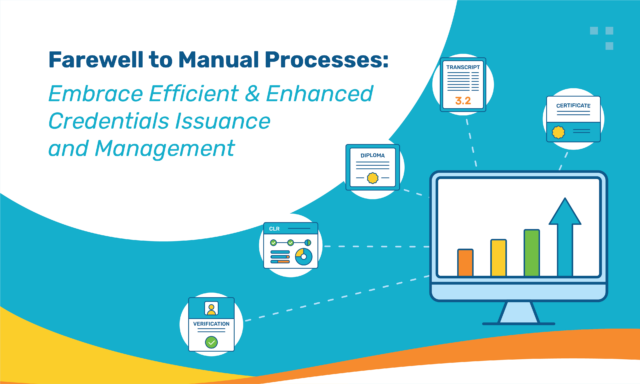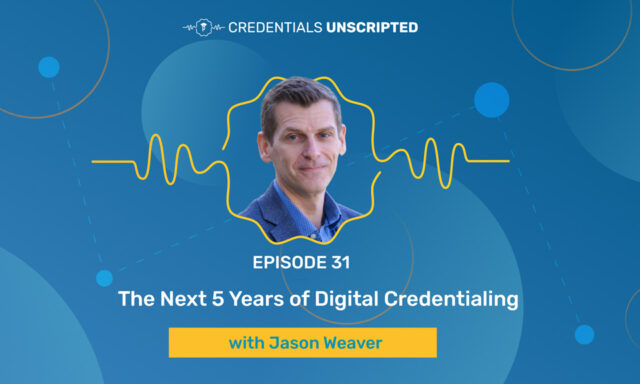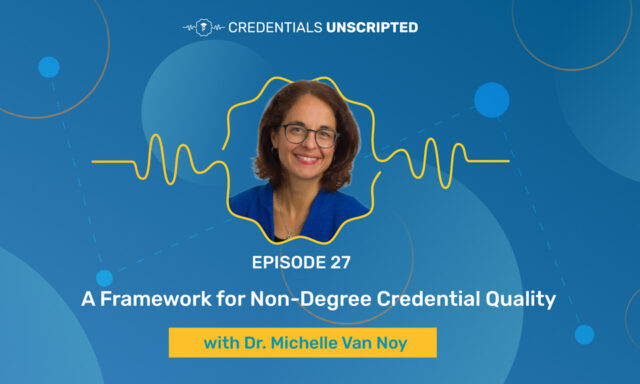To our school and university members, employees and partners,
Parchment’s mission is to help turn credentials into opportunities, and we take this mission seriously. More than a slogan, it’s why most of us at Parchment joined the company and why so many schools, colleges and universities are members of the Parchment network.
We include the qualifier “help” intentionally because it reminds us that our role is one of enabling. Our school and university members are the central players when it comes to making academic credentials a more effective and meaningful currency for pursuing opportunities for further education or in the labor market.
Three Big Enablers
We believe that to turn credentials into opportunities, we, as a community, have to do three fundamental things.
First, make all credentials digital, and digital credentials machine-readable data.
This may be self-evident in some quarters and a “technical detail” in others, but it’s a Big Idea nonetheless. When credentials are data:
- Two-year institutions can track students who progress into a four-year program and award them an Associate’s degree in passing once they’ve met the requirements.
- Employers can begin to evaluate and understand the relationship between postsecondary education experiences and outcomes, with the key talent management outcomes that drive their organization’s success.
- Summative outcomes like courses and grades can be explored through hyperlinks to access course descriptions, syllabi and evidence of learning (e.g., key projects and papers).
- High school students can assess their admissions probabilities at colleges of interest, and college admissions offices can use prior academic performance to help guide student course placement, not just make an admissions decision.
- Linkages between learner, credentials and opportunities can be measured and leveraged in ways that help rationalize a patchwork system of education, credentials and occupational fields.
Digital technology removes the friction that keeps credentials separated, whether in manila file folders or in frames lining the hallway of a home. Credentials that live as data can be combined into a single profile that reflects a lifetime of academic achievement, giving learners not only the right, but also the ability, to control who sees their record and to put that information to work on their behalf.
Second, be more innovative in the form and function of credentials.
The transcripts we’ve used for generations were developed by institutions to document courses and credits for mobility within the education system. While respecting that important use, transcripts can and should be transformed, creating more value for learners, employers and academic institutions.
Next-generation transcripts will be visual, richer and more descriptive, showing achievement over time and the distribution of courses taken by topic or skill. Academic transcripts will be extended to include experiential achievements such as club leadership, study abroad and faculty research collaborations. Diplomas will be gateways to portfolios, which provide evidence of learning. And students will be able to select focal courses to highlight at the top of their transcript, calling an employer’s attention to relevant learning. In short, the one-size-fits-all credential types of transcripts and diplomas will give way to different credential formats that are more personalized to the purpose for which they are being requested.
Getting to this point will require us to think differently. Rather than presuming that transcripts and diplomas are summary documents that say essentially the same thing, what if we asked employers and admissions offices: What do you want to know about our graduates? What should we track and how should we express it? Answering these questions thoroughly and honestly could lead us to a superset of data that gets turned into various credential types for various audiences, as needed.
Third, make credentials truly portable, allowing individuals to collect and manage their credentials throughout their lives.
This is a significant but crucial shift. When institutions control credentials they become fragmented for the learner who wants and needs a profile that reflects their collective achievements. When combined in this way—securely and verifiably, with the explicit permission of granting institutions—credentials become currency that helps learners forge a path forward. They create opportunities.
We live in a Credential Society
I am a radical incrementalist. I believe in the ability of technology to transform education, and I believe the way education is transformed is step by step, over time (and not Internet time). To do that and make the changes stick, we need to first recognize where we are now and how far we’ve come.
We live in a world where our economy and our society are knowledge-driven and knowledge-based. Roughly half of adult Americans have an academic credential such as a diploma or certificate, while one in four have a professional credential such as a certification or license. Credentials are the currency that allow us to gain entry into and benefit from this structure, but we lack a way to evaluate the knowledge and comparative value credentials convey.
As a society, we’ve become so awash in credentials that a Connecting Credentials framework was developed last year to create a set of common reference points. The idea is to develop ways to compare the “level and types of knowledge” that are conferred by certain degrees, certificates, industry certifications, licenses, apprenticeships, badges and more, in order to fully account for all that students achieve in a lifetime of learning.
It could take a decade of incremental change to get to the point where we can look at credentials and accurately compare the skill sets of two different, but highly skilled, professionals. In the meantime, we need a next-generation digital credential service that supports every transcript, every diploma, every certificate and certification, fully and digitally.
And once we have a fully digital infrastructure for education credentials, we can do more. We can evaluate how certain credentials are represented in the marketplace and help future generations to customize their education. We can also better match employers with prospective employees by studying how credentials affect work outcomes.
In short: we can optimize how students, universities, employers and government institutions spend their time and treasure on higher learning.
Stacking a Future, One Credential at a Time
Education has evolved. We’ve seen it. Many of us at Parchment have worked at schools and universities or in other technology companies that serve educational institutions. With digital technology, today’s graduates can collect and stack credentials that reflect what they learn over a lifetime, helping them navigate fluid careers that ebb and flow as skillsets probably change.
The more we commit to building a digital credential infrastructure, the more opportunities we create for learners to “stack” credentials together to show provable expertise worth hiring or admitting. And the more effectively we can serve employers who want to assess much more than a year-to-year change in GPA and learners who want to showcase their experiences. Institutions also benefit by decommoditizing programs and proving that not all credentials are equal.
But this only works if lifelong learners have a single profile for collecting every credential they earn, which is why we’ve been working so hard to create the next-generation digital credential service. In fact, we use the same three fundamental goals I’ve laid out as our product north stars: making credentials digital and machine readable, innovating the form and function of credentials and making credentials truly portable.
You’ll be hearing more about how our product roadmap is advancing all three from our SVP of Product and Support Rajeev Arora in an upcoming blog post. The evolving Parchment platform for digital credentials serves three distinct stakeholders: the issuer, the learner and the receiver. Each has a role to fulfill. It’s a big step on a long journey we’re taking on behalf of our members. I invite you to be a part of it.
Thank you,
Matthew Pittinsky, Parchment Chief Executive Officer
SOURCING:
- https://www.luminafoundation.org/resources/connecting-credentials



